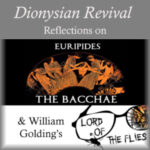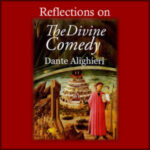Reflections on the Bible
The Poetry of Truth: Reflections on the Gospel of Luke
The author of the Gospel of Luke and the Acts of the Apostles, St. Luke, is traditionally known as a sophisticated non-Jew Hellenist and perhaps a physician. He was an early convert to the Christian faith, most likely through the preaching of St. Paul. But, as Gil Bailie points out in this presentation, Luke is above all a gifted teller of tales – or rather a re-teller of tales. The stories in Luke’s gospel are vivid and distinctive among the synoptic gospels.
(This series was originally recorded with a presentation beginning on Mark Twain’s posthumously published “The United States of Lyncherdom”. It was later thought that, although a valuable piece, it would be better presented on its own and not used as an introduction to the Gospel of Luke. However, you will hear an occasional reference to this at points in these reflections.)
St. Paul’s Letter to the Romans
St. Paul’s writings comprise a large part of the New Testament. The Letter to the Romans is considered the most central and comprehensive of all of his writing. He was the most dynamic and peripatetic of all of the first interpreters of the Christian message. Whereas the Gospel writers were careful to relate theological meanings to the detailed events of the life of Jesus and his sayings, Paul took the opposite approach. He extracted the theological meaning of the life, death, and resurrection of Jesus and elaborated it into the foundational understanding of the Christian experience not only of the first century A.D. but for every Christian since.
The Gospel of John
At the end of the first century, the scattered Christian communities had no common creed, and anxiety about the waning link with the historical Jesus was inspiring many to grope for bedrock by searching for information about the historical Jesus. In other words, those at the turn of the first century ran the risk of falling into the trap into which many modern biblical scholars have fallen, namely, of hunting for scraps of evidence about the historical Jesus. In response to this dire possibility, the author of John’s Gospel told his community of the cosmic meaning of Jesus’ life. John understood perhaps at a deeper level than the other evangelists — and at a level comparable to that of Paul — the truly radical revolution that the gospels were announcing to the world.
The Bible: From Slavery to Freedom
Reading the Bible is like looking out of a window and seeing a crowd out in the street shading their eyes and gazing with intense interest at something that we can’t see because of the roof of the building from which we’re peering out. They gesture and they point and they speak in a language we can’t decipher. They are very excited about something. Something is happening or is about to happen, but what is it? – Karl Barth
This four part series takes the listener through an often imaginative overview of some of the most significant biblical stories. Using aspects of René Girard’s mimetic theory as an interpretive lens through which to see the dynamics of the stories in both anthropological and theological perspectives.
The Bible: Creation, Fall, & Sacrifice
Is there a main theme, a discernable underlying story, perhaps a real story that informs the myriad biblical narratives? Gil Bailie believes there is and leads the listener on a voyage of discovery into the biblical texts.
This eight part series explores the biblical themes of creation, fall, and sacrifice as depicted in various stories related in the biblical texts using the interpretive tools made available in René Girard’s mimetic theory.
The Hebrew Prophets: Amos, Isaiah, & Jeremiah
“In the last resort a prophet who is not a poet must keep silent, and the prophet who is a poet cannot be understood. This after all was the perennial dilemma of the Hebrew prophets. There is perhaps only one way of resolving this particular dilemma: Let the prophet but die in Jerusalem, and he will not have lived in vain.” – Gabriel Marcel
This three part series provides an introduction to the Hebrew prophets and a closer look at three prophets in particular, Amos, Isaiah, and Jeremiah.



